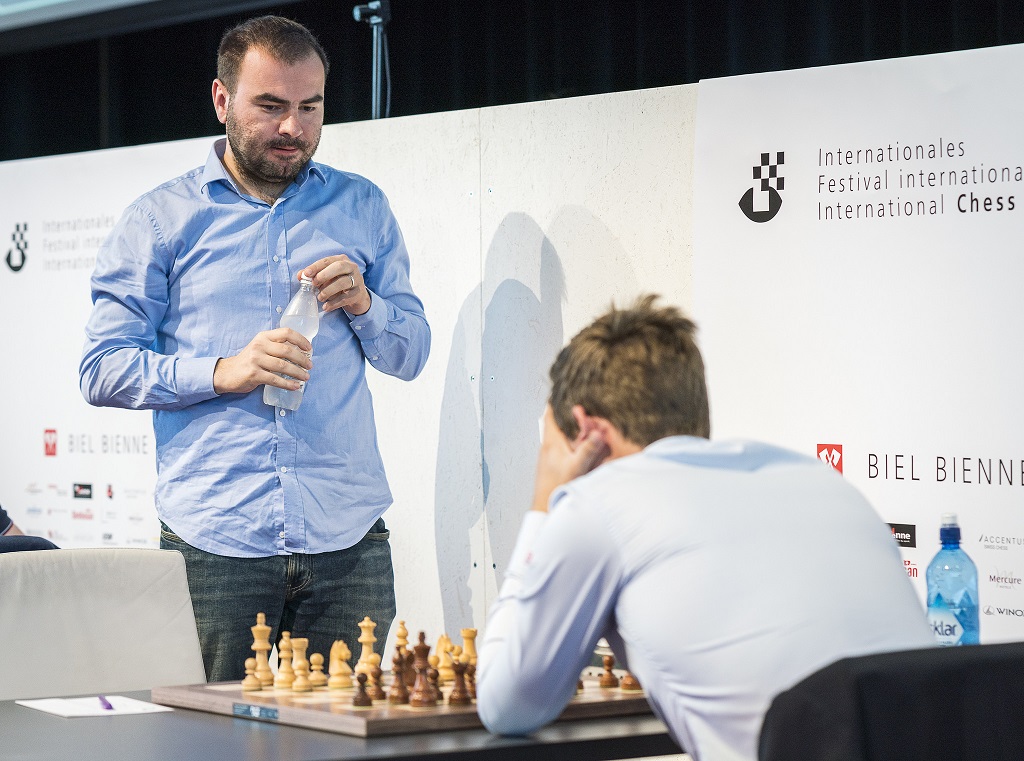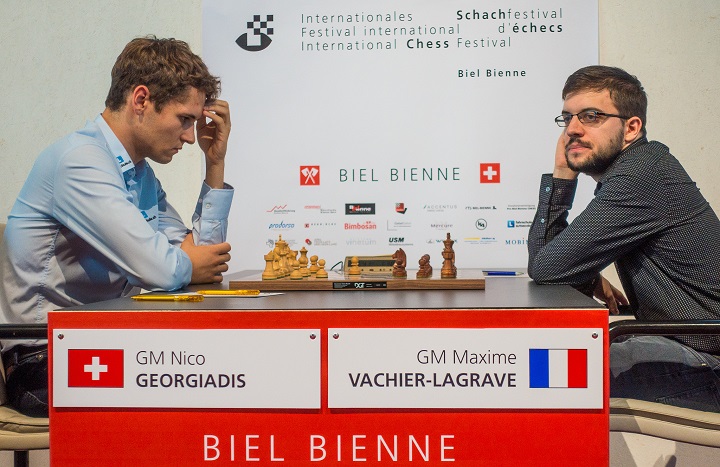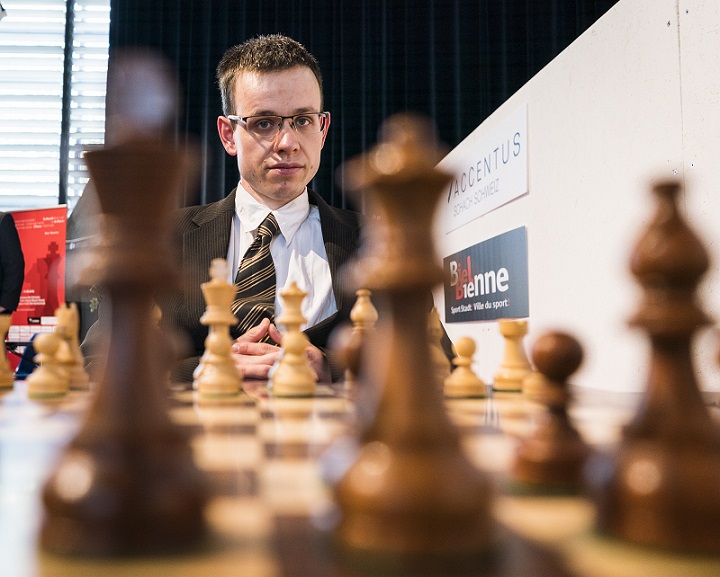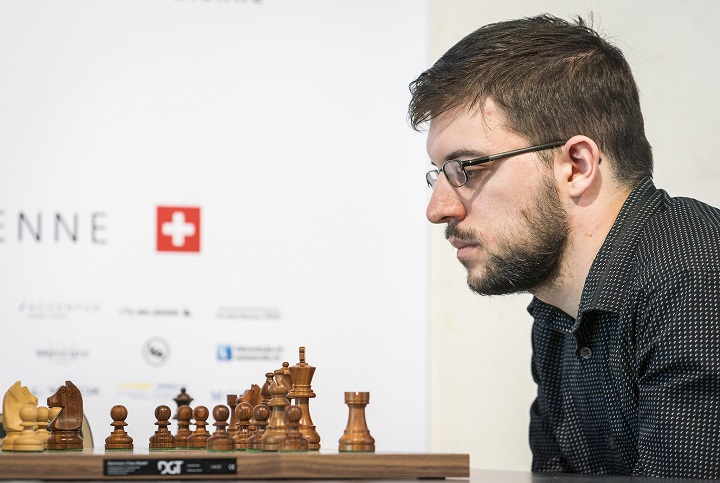


Chess News







The most expected game of the event did not disappoint, as Carlsen clearly had his eye on winning the tournament. Lagging one point behind Mamedyarov, he knew that it would be naïve to think that after a draw he would be able to tie with Shakhriyar in the last round — although it was not impossible.

Carlsen went all-in and his plan backfired | Photo: Lennart Ootes / Biel International Chess Festival
Consequently, Magnus answered to Shak's 1.d4 with a King's Indian Defence, but the Azeri player calmly went into a Fianchetto Variation. By playing 6...c5, Carlsen tried to get a Benoni structure and once again his opponent replied with a quiet move, 8.e3. Finally, Carlsen decided that his best chance was to battle in a Grünfeld-like structure. White had a comfortable play, as he avoided creating weaknesses in his camp.
At the press conference after the game, Carlsen recognised that he had overestimated his position. His manoeuver 19...Bf5 20.e4 Bd7 was a mistake — the World Champion overlooked the continuation 21.Qe3. From that moment on, Carlsen felt that he had played too riskily, missing moves that he would not miss normally.
Mamedyarov started ploughing ahead with his central pawns and the players quickly went into an endgame with rooks and bishops of opposite colour — and, most importantly, White was a pawn up. In fact, when Carlsen erred with 26...Qf8, Ian Rogers at the commentary room called his next move, 27...Be6, "almost desperation". It was clear that only two results were possible.
Both players thought that the endgame was difficult to win, but Carlsen showed imprecise play and ended up resigning on move 57.
Mikhail Golubev sent a detailed analysis of perhaps the most memorable game of the event:
David Navara and Peter Svidler played a Symmetrical English, in which White opened the centre quickly with 3.d4, looking to create a Maroczy structure on the board. However, Black avoided this to happen with a long bishop manoeuver (Bf8-c5-b6-c7) and a Queen's Gambit structure was established instead.

It has been a tough and entertaining tournament | Photo: Simon Bohnenblust / Biel International Chess Festival
The queens were exchanged early in the game, and the struggle became interesting when Svidler decided to go get a pawn on the queenside.
Nonetheless, the players showed very correct play in the moves that followed and a rook endgame with pawns on the same flank did not take long to turn into a draw.
On this DVD, Grandmaster Daniel King offers you a repertoire for Black with the QGD and against the Catalan. The repertoire is demonstrated in 20 stem games, covering all White's major systems.

Vachier-Lagrave played his favourite defence, the Grünfeld | Photo: Lennart Ootes / Biel International Chess Festival
Nico Georgiadis missed a chance to win his first game of the event in the previous round, when he obtained a decisive material advantage but could not convert it against Navara. In the penultimate round, he had White against Maxime Vachier-Lagrave and fought against his opponent's Grünfeld with a rare line of the Fianchetto Variation that included an early 8.Bb2.
It was a balanced game. After the queens were exchanged, Black obtained the typical pawn majority on the queenside, but Vachier-Lagrave did not push too hard to make something out of it and accepted the draw after 42 moves.
Mikhail Golubev also took a deeper look at this game:
Commentary by GM Daniel King and IM Anna Rudolf
Translation from German and additional reporting: Antonio Pereira
| Advertising |